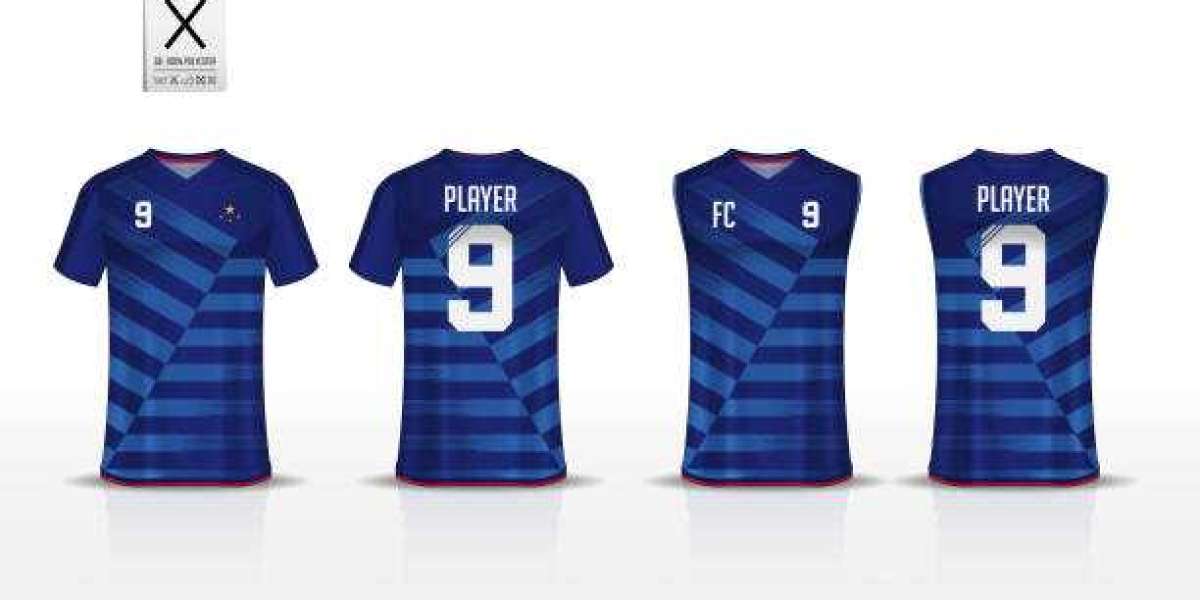Hockey uniforms work best when the design serves clear goals.
Clarify the game planHockey uniforms work best when the design serves clear goals. Define what matters most for the program: visibility on fast ice, durability through contact, and a look that builds pride. Establish must-have elements like number size, nameplates, and captain markings before sketching colors or stripes.Lock in a color paletteChoose two primaries and one accent that read well against white ice and dasher boards. Strong contrast keeps players identifiable in scrums and during line changes. If the team has legacy hues, request lab dips to match them precisely across jerseys, shells, socks, and warmups.Make it readableHigh-contrast combinations help cameras and spectators read numbers from distance. Dark jerseys need bright numerals and outlines; light jerseys need crisp, dark figures with clean edges.Pick typography that performsSelect a number font with open counters and balanced stroke widths. Avoid decorative flourishes that blur at speed. Nameplates should use a simple, condensed typeface to fit longer surnames without shrinking letters. Confirm league requirements for minimum number height and placement.Fabric and construction matterGame jerseys should pair breathable double-knit with reinforced shoulders to handle tie-downs and friction from pads. Mesh zones under the arms and along the spine improve airflow without exposing base layers. Flatlock seams reduce chafing, while bar tacks at stress points add strength where it counts.Test for movementRun a quick wear trial with a full kit: stickhandling, board battles, and repeated shots. Note hotspots at the collar, elbows, and hem. If jerseys ride up, consider a slightly longer back drop and grippier waist elastics.Graphics that lastSublimation embeds color into the fabric, keeping garments light and flexible for long shifts. Tackle-twill numbers offer a classic texture and excellent durability when stitched with zigzag patterns and heat-seal backing. If mixing methods, ensure inks and adhesives are compatible with the chosen textile.Balance tradition with modern cuesStriping can nod to local history while using contemporary spacing for a cleaner silhouette. Shoulder patches, anniversary marks, and city emblems connect the roster to community pride. Keep placements consistent so alternates still look related to the primary set.Fit every athleteProvide inclusive size runs and clear measurements for chest, torso length, and sleeve opening. Articulated elbows and raglan shoulders preserve range of motion over pads. Offer straight and tapered cuts so each player can choose the silhouette that feels right on the ice.Smart accessoriesCoordinated socks, shells, and warmups extend the brand through practices, travel, and pregame skates. Ventilated base layers and moisture-wicking socks manage sweat, reduce odor, and help athletes recover between periods.Plan ordering and reordersDocument specs in a simple brief: colors with codes, fabrics, stitch types, number font, size run, and decoration notes. Keep on file for midseason replacements to avoid shade shifts. Build in extra blanks for call-ups and damaged pieces to maintain a consistent bench look.Final checks before greenlightStage a full-gear photo under arena lighting to confirm color accuracy and number readability. Wash-test a sample for colorfastness and shrinkage. Verify sponsor zones, captain letters, and league compliance. When these steps align, players step onto the ice with the poise of seasoned pros, and supporters recognize the team instantly during breakaways and penalty kills. Programs across the USA can translate these principles to travel schedules, practice intensity, and tournament demands without losing sight of identity or performance.For tailored guidance, templates, and streamlined customization, teams can review options from Sports Custom Uniform to lock in specs and delivery timelines worthy of Hockey season ambitions.
 Exploring Online Sports Betting and How the Sureman Scam Verification Platform Can Protect You
Exploring Online Sports Betting and How the Sureman Scam Verification Platform Can Protect You
 Enrol in Best Animation and Multimedia Courses at IDEAMAX Institute
Enrol in Best Animation and Multimedia Courses at IDEAMAX Institute
 Vibely Mascara Takes Sephora By Storm: A Lash Change?
Vibely Mascara Takes Sephora By Storm: A Lash Change?
 Електрорадіатори – сучасне опалення для комфортного життя
Електрорадіатори – сучасне опалення для комфортного життя
 Betting Battles: Islamic Police Crackdown Escalate as Innovation Company Challenges Nigeria's Betting Giants
Betting Battles: Islamic Police Crackdown Escalate as Innovation Company Challenges Nigeria's Betting Giants


